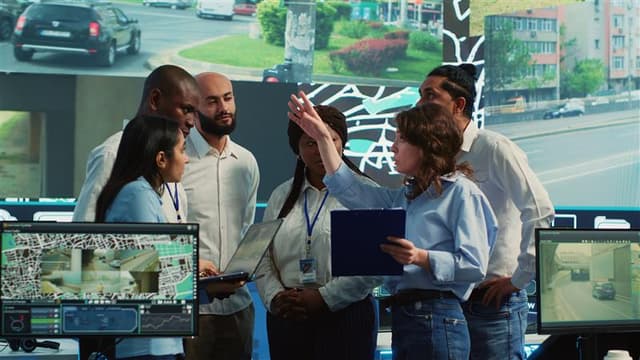Ledgers Reconciliation
How a unified ledger solves multi-rail settlement chaos
Discover how a unified ledger streamlines multi-rail payment settlement, reducing reconciliation errors, costs, and delays with a single source of financial truth.

Amrit Mohanty
Jul 23, 2025 (Last Updated: Nov 24, 2025)

The clock on the wall reads 7:00 PM, but for your operations team, the day is far from over. The room is a tense mix of cold coffee, furrowed brows, and the frantic clicking of keyboards. You’re in the “war room” again. A single, significant settlement break has occurred somewhere between an ACH batch, a FedNow® payment, and a card network file, and no one can pinpoint the source.
For Heads of Operations and Treasury, this scene is a recurring nightmare. As one leader put it:
"Our operations team lives in a constant state of reaction, manually reconciling settlement breaks between ACH, FedNow, card networks, and wire transfers. Each system has its own format and timing, and a single discrepancy can take days and thousands of man-hours to resolve."
This isn’t a failure of people; it’s a failure of architecture. The chaos is a direct symptom of trying to manage modern, multi-rail payments with a fragmented, outdated approach.
The root of the chaos: Reconciling silos after the fact
Your payment ecosystem is a collection of powerful but separate systems. Each payment rail was built in a different era, for a different purpose, with its own unique rules.
- ACH (Automated Clearing House): Operates in batches with specific settlement windows. Its data format is unique.
- Card Networks (Visa, Mastercard): Involve complex multi-party settlements (issuers, acquirers, merchants) with their own timing and fee structures.
- Wire Transfers (Fedwire): Gross settlement, real-time, and final, but operates on a separate system from everything else.
- Real-Time Payments (FedNow®, RTP®): Instantaneous, 24/7/365 settlement, adding yet another layer of speed and complexity.
The problem is that you only discover discrepancies after these siloed systems have completed their processes. Your team receives separate reports, in different formats, at different times, and is tasked with the monumental job of manually stitching them together. It’s like trying to assemble a puzzle using pieces from four different boxes. When one piece is missing or doesn't fit, the entire picture breaks down.
This reactive model—post-facto reconciliation—is the direct cause of:
- Massive Operational Overhead: Thousands of man-hours spent hunting for needles in haystacks.
- Increased Financial Risk: Unsettled funds, potential write-offs, and inaccurate cash positions.
- Delayed Resolution: A single break can take days to resolve, tying up your best people in low-value, high-stress work.
The architectural shift: From reactive cleanup to proactive control
The solution isn't a better spreadsheet or a bigger "war room." The solution is to fundamentally change the architecture from reactive to proactive. This is the core principle of a unified ledger.
Instead of waiting for downstream reports, a unified ledger platform sits at the heart of your payment flows. It doesn't just check the results; it creates the single source of truth from the very beginning.
Here’s how it works:
1. Ingest in Real-Time: The platform connects to all your payment rails and internal systems, ingesting transaction data and events as they happen. There is no waiting for an end-of-day batch file.
2. Normalize and Standardize: It translates the disparate data formats from ACH, wires, cards, and real-time payments into a single, consistent structure. A debit is a debit, and a credit is a credit, regardless of its origin.
3. Reconcile Continuously: Every transaction event is immediately reconciled against the central, immutable ledger. The system isn't comparing two external reports; it's validating every single event against its own perfect record in real-time.
With this model, a settlement break isn’t something you discover hours or days later. A potential exception is flagged the microsecond a mismatch is detected between an expected event and an actual event.
The unified ledger in practice: Preventing fires, not just fighting them
This architectural shift transforms the daily reality for your teams. The frantic, manual clean-up crew is replaced by an automated, preventative control system.
With the Optimus Ledger Reconciliation Platform this proactive model becomes your new operational standard:
- A Single Pane of Glass: Your team gets a real-time, consolidated view of every transaction and cash position across all payment rails. No more toggling between five different systems to get an answer.
- Automated Exception Handling: The platform automatically identifies and flags potential breaks the moment they occur, complete with the contextual data needed for immediate resolution. What once took two days of research now takes two minutes of review.
- Immutable Audit Trail: Every transaction, reconciliation, and adjustment is recorded on an immutable ledger. This provides a golden source of truth for finance, compliance, and auditors, eliminating version control issues and data disputes.
The business impact: Beyond a quieter war room
The benefits of moving to a unified ledger extend far beyond reducing operational headaches. For Heads of Treasury and Operations, the impact is strategic.
- Drastically Reduced Operational Costs: By automating the painstaking manual work of cross-referencing disparate reports, a unified ledger eliminates the root cause of the "war room." What previously took teams hundreds of man-hours per month to investigate can now be identified and resolved in minutes. This can reduce reconciliation overhead by over 80%, allowing you to re-deploy highly skilled employees from reactive clean-up to high-value strategic initiatives.
- Minimized Financial Risk: Real-time reconciliation prevents unsettled funds from lingering, reduces the risk of costly write-offs, and eliminates errors that could lead to financial losses or compliance breaches.
- A Definitive Source of Truth: Eliminate the endless debates and data disputes between teams, systems, and reports. A unified ledger creates one immutable, auditable "golden record" for every transaction across all rails. This simplifies reporting, satisfies auditors, and provides an unshakable foundation of trust for all financial operations.
- Optimized Liquidity: With a precise, real-time view of cash across all accounts and payment systems, treasury teams can make smarter, more timely decisions about funding, investment, and capital allocation, backed by data they can trust completely.
- Future-Proof Agility: Adding a new payment method? With a unified ledger, you simply connect the new rail to the central platform. You don't create a new silo and a new reconciliation nightmare. Your infrastructure is ready for whatever comes next, without adding exponential complexity.
Stop managing chaos. start preventing it.
The settlement "war room" is a choice, not an inevitability. It is a symptom of an architecture that was not designed for the speed and complexity of modern, multi-rail finance.
By shifting from a reactive, post-facto reconciliation process to a proactive model built on a unified ledger, you can eliminate the chaos at its source. You can transform reconciliation from your biggest operational bottleneck into an automated, strategic advantage.
Ready to dismantle your war room for good? See the Optimus platform in action and learn how a unified ledger can bring certainty and control to your multi-rail settlements.

